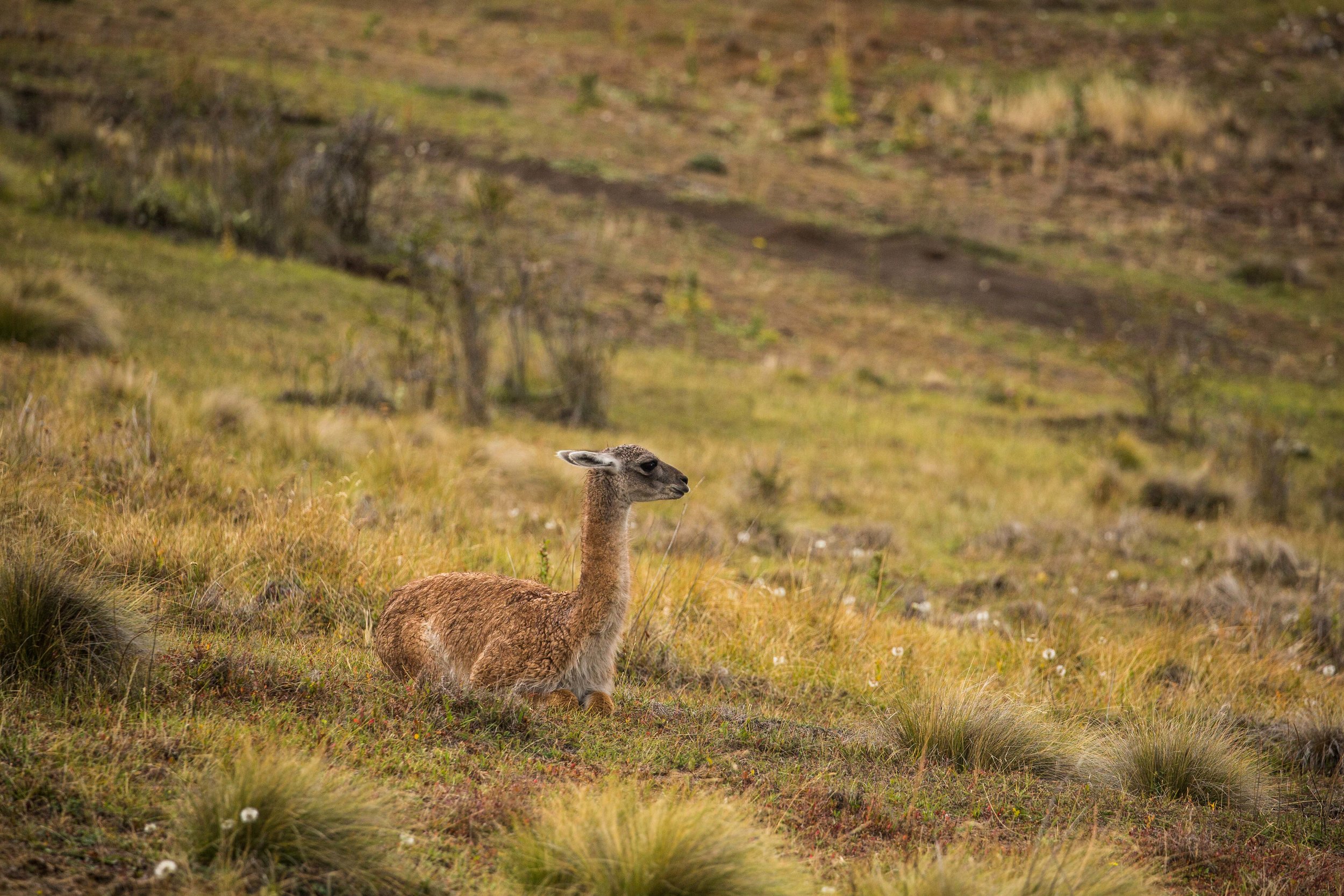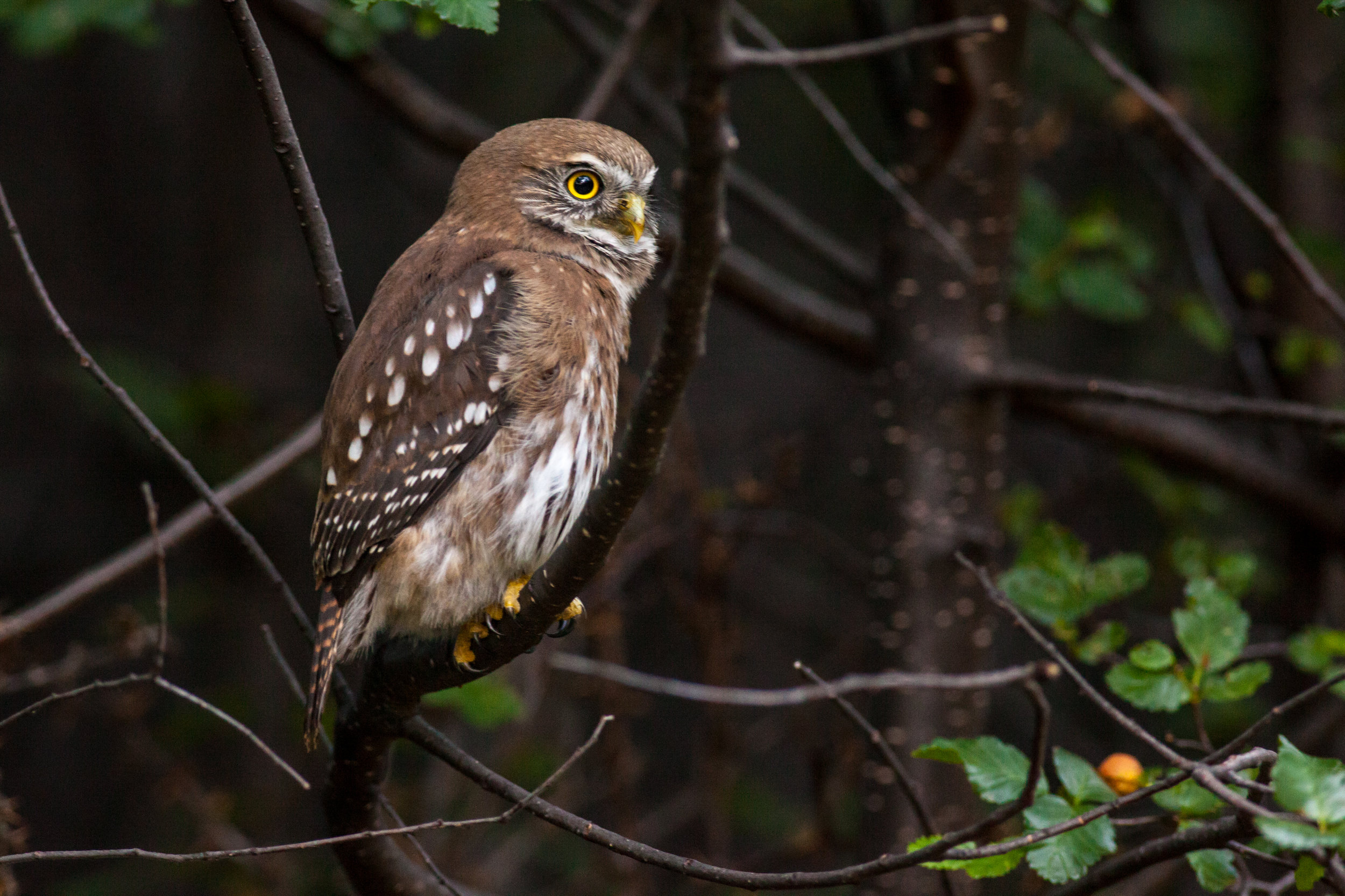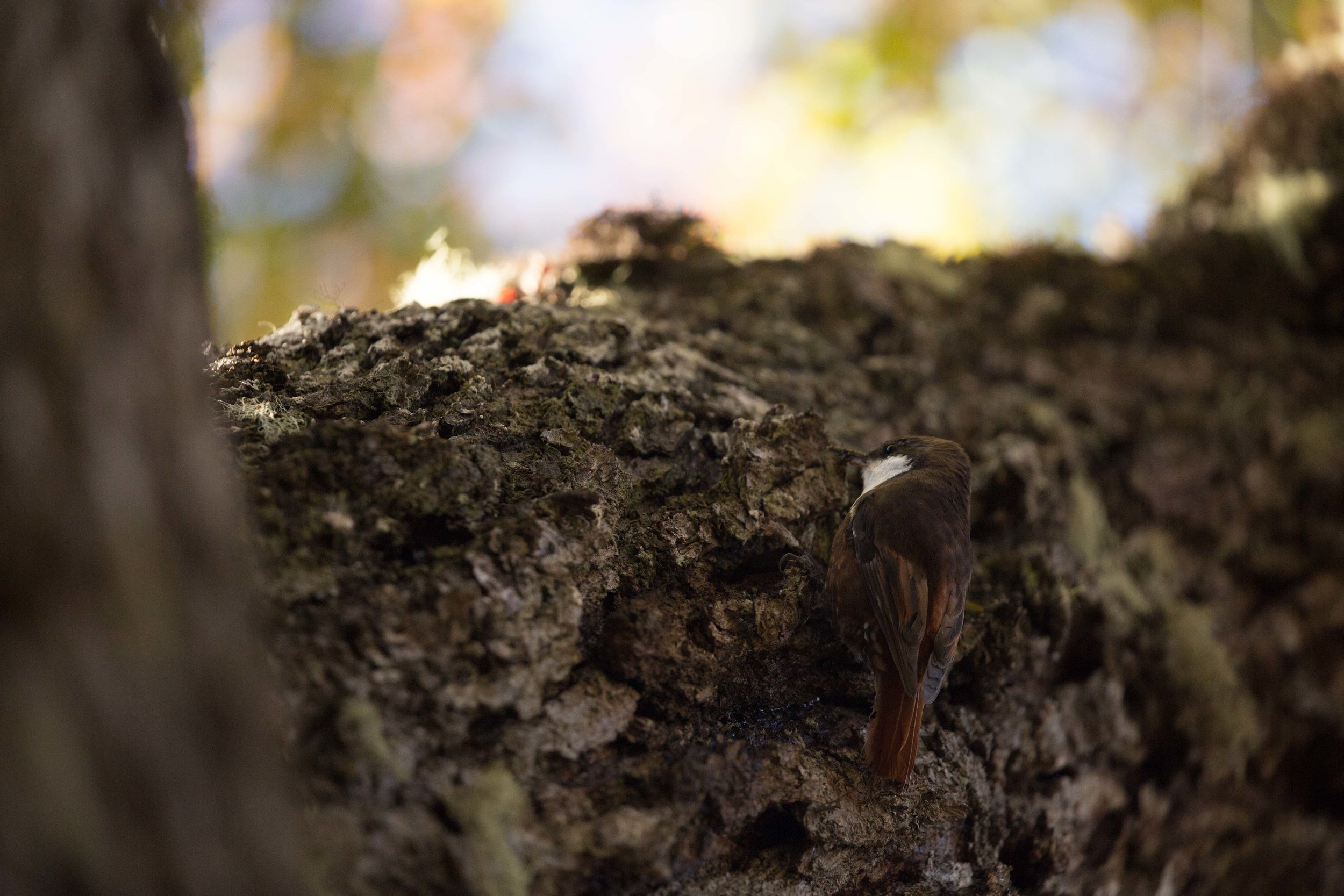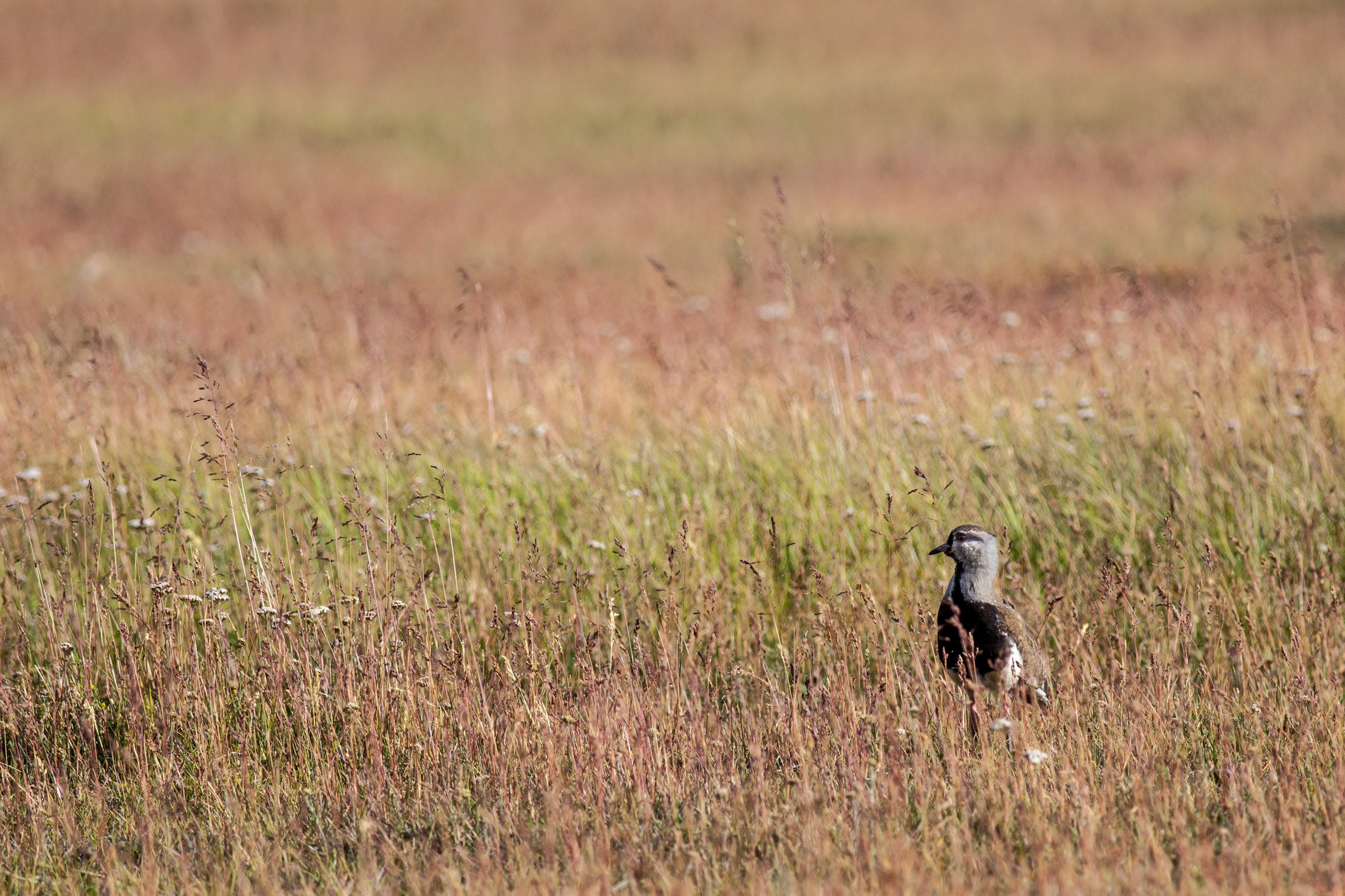BIODIVERSITY IN THE CHACABUCO VALLEY: Restoring a Unique Ecosystem
Text & Photos: Justin Lotak · 10 min read
Young guanaco taking a break from grazing
“As far as the Patagonian ecosystems go, this place has a great and special biodiversity. It’s an area of transition between the Andean forest to the Patagonian steppe, uniting these two main ecosystems. Plus, it has wetlands, lakes, and high altitude micro ecosystems, so it generates an interesting landscape that comes with an important diversity of flora and fauna.”
– Cristián Saucedo Gálvez, Director of Conservation, Conservacion Patagonica
Chile’s Chacabuco Valley is a unique place. The steppe ecosystem, common in neighboring Argentina, sneaks its way into this open valley in central Chilean Patagonia, and the conditions are just right for a variety of species that are not as frequently seen elsewhere throughout the country. Hence the reason the Chilean government had identified this region as a priority site for biodiversity conservation. And in 2004, the organization Conservacion Patagonica purchased this former sheep ranch, and began restoring it to what it once was.
Tucked between two mountainous national reserves, the Chacabuco Valley (or Valle Chacabuco), is an impressive sight. This valley is arguably what makes up the heart of the future Patagonia National Park: an impressive undertaking to combine two national reserves and Conservacion Patagonica’s private land into what will undoubtedly become one of Chile’s most iconic national parks. Thirteen years after the valley switched from grazing to conservation, the land that was once almost desert-like with invasive vegetation and severe erosion has transformed into a splendor that deserves to be better understood by the public.
We had been in southern Chilean Patagonia for over two months before arriving in Valle Chacabuco. The weather throughout most of the places we’d been was windy, overcast and wet; but immediately upon arrival in the valley, the sun greeted us warmly. There is a pocket of “better” weather that tends to hang around Valle Chacabuco. To the north is the Valdivian Temperate Rainforest: home of Parque Pumalín and several incredibly lush national parks, and to the south are the extensive fiords of the Magallanes region. In both of these areas one can expect lots and lots of rain, but in between the weather tends to be drier and sunnier, bringing with it unique vegetation and species.
Conservacion Patagonica and several volunteers have been working hard to restore the ecosystems of Valle Chacabuco to their original states and, as we spoke at length with Conservacion Patagonica's Director of Conservation, Cristián Saucedo Gálvez, we learned more about the work they've done as it pertains to biodiversity restoration. Fences from the former sheep ranch have been removed, invasive plant species such as rosa mosqueta have been mostly eradicated, native species such as coirón grass have been redistributed and established, and with the native vegetation, native animals have gradually made their way back into the valley.
“We created the space needed for the recuperation of native species. It gave them the chance to repopulate the space they had lost with the arrival of livestock. The way livestock was managed here was extensive, it involved thousands of animals so they were obviously putting pressure on wildlife and land resources. As a result: the guanacos were displaced, there were areas that were encircled by double fences that weren’t allowing the guanaco to enter, they were hunted. The huemuls competed with the cows, the dogs bother and hurt them and could give them diseases, people hunted them. All those threats, as they were being eliminated, created the space for the restoration of the ecosystem: the soil, the steppe vegetation, the guanaco, the huemul. By pulling out fences we were looking to reestablish the grounds these animals previously had. Those fences represent barriers that force species to remain in certain spaces.” — Cristián Saucedo Gálvez
One of the most iconic species of Valle Chacabuco is the guanaco, and often they will be seen hanging around the park offices in herds. Guanacos (Lama guanicoe) are a species of camelid, similar to the alpaca or the llama, and their range extends from Tierra del Fuego in the south to as far north as Peru. When the valley was a sheep ranch, or estancia, fences were one of the leading causes of death for this species. They would often get tangled in barbed wire where they would remain for days until they starved to death. With the help of park staff and volunteers, the fences have now been removed and guanacos have rebounded in the area, though their larger population is still viewed as sustainable because it is regulated by their local predator, the puma.
“Some say ‘wow, all the guanacos that are here now, did you bring them here?’ No, but we pulled out the fences and stopped bothering them, and here they are...and without a doubt the natural restoration is happening. The local population of guanacos of about 3,500 individuals is equivalent to some 7,000 sheep in terms of impact. One guanaco = 2 sheep. Here there were over 30,000 sheep. And with all the lambs when breeding there were at times close to 60,000. So without a doubt the pressure on the steppe and the soil has diminished substantially. If we didn’t have pumas now the situation would be catastrophic too. The guanaco population would go through the roof and that could mean the same impacts as livestock or worse. I use the example of the puma regulating the guanaco so that the locals can better understand the purpose that the puma has in the ecosystem. The pumas will be present where there’s plenty of food. If there are 3,000 guanacos there will be many more of them than in a place where there are no guanacos.” — Cristián Saucedo Gálvez
A young guanaco, known in Spanish as chulengo, dust bathing while an adult stands watch
Guanacos make up approximately 80% of pumas’ diets in Patagonia Park. Pumas are one of the most versatile species of cats, with a range that extends from northern Canada and Alaska all the way down to the south of Chile, including the rainforests in between. Throughout Chilean Patagonia, pumas have been hunted by ranchers due to the threat they pose on their livestock. One of the ways in which to mitigate this threat, and which Conservacion Patagonica has been promoting in the region, is to utilize livestock guardian dogs to protect the sheep herds, including species such as Great Pyrenees, Polish Tatra Sheepdog, Pyrenean Mastiff, and the Maremma Sheepdog. Using dogs to protect livestock is not something new in Europe or Asia; it’s a proven technique that goes back thousands of years. In Chilean Patagonia, however, it is something that local ranchers are just beginning to utilize, and hopefully more and more sheep estancias in Chile and Argentina will adopt this practice which helps ensure the local puma population can live alongside humans and their livestock. Conservacion Patagonica has also begun a puma tracking program, which is now several years old, and some former puma hunters are often the ones that are now puma trackers and protectors. Data has been gathered for years, providing the wildlife conservation team with information as to where pumas roam, what they eat, and how their populations have changed. As with the guanacos, the local puma population is doing well. And, although you would be lucky to see one, you may have a better chance of seeing a puma in Parque Patagonia than any other area of Chile due to its open landscape.
Cristian Saucedo speaking about the livestock guardian dogs: "We didn’t discover this technique though, obviously. It’s an ancient one in Europe. Every country there developed one or more dog breeds that would specialize in protecting livestock from bear or wolf attacks. There they work with four or more dogs at a time and often they wear a metal collar around the neck so that the attackers can’t grab them from the neck and kill them. Here that’s not necessary. One can work with one or two because they are capable of scaring away a puma or the foxes."
Another species that are sometimes prey to pumas is the huemul, or South Andean deer (Hippocamelus bisulcus). Huemuls are highly endangered, with an estimated world population of less than 1,500. The primary cause of their decline has been habitat loss due to humans. The forests of both Tamango National Reserve to the south and Jeinimeni National Reserve to the north are prime huemul habitat, and by connecting this entire area with the addition of Valle Chacabuco, the huemul will have a larger area to reproduce and grow its regional population. Seeing a huemul is very possible in Tamango National Reserve, as it hosts an estimated 10% of the total world huemul population. Due to the work of connecting and restoring fragmented habitats in a southern sector of Patagonia Park, the estimated huemul population has gone from 0.35 huemuls per square kilometer in 2006 to 1.3 huemuls per square kilometer in 2015. Also, Conservacion Patagonica has been hosting the “Ruta del Huemul” each year, which is a two-day trek across Valle Chacabuco and Tamango National Reserve to help educate participants in the importance of the conservation of the huemul’s habitat. To learn more about the huemul, Conservacion Patagonica describes this species and the work they’ve done for its conservation in their first Wildlife Bulletin newsletter.
A male huemul crossing freshly fallen snow. Photo taken at the Cerro Castillo National Reserve, the only place where we finally spotted this elusive species
The ñandú (Rhea pennata), also known as the lesser rhea or the Darwin’s rhea, is a large flightless bird that roams the steppe ecosystems of Chile and Argentina. They are similar to ostriches in appearance, though a little smaller, and they are omnivorous, feeding on insects, small reptiles, seeds, herbs, shrubs and roots. Apart from the southern Magallanes region, they are not often seen in Chilean Patagonia, but again the unique ecosystem of Valle Chacabuco is the perfect habitat for this species. In 2015 Conservacion Patagonica began their Darwin’s Rhea Conservation Program, and it is making progress to repopulate the ñandú into various areas further to the east in Valle Chacabuco, though it has involved considerable work:
"The ñandú program has meant a lot of energy invested and also a lot of money. Creating the enclosures and keeping live animals in 365 days, 24 hours/day means a lot. Food, water, the whole logistics of functioning in a remote area where it’s hard to get. It’s much more complicated than what one imagines. It’s not like in a zoo or in an accessible area. Functioning where we do means a lot of planning, keeping a food stock within reach, and lots of aspects that are challenging. That goes in parallel with the breeding center activities." — Cristián Saucedo Gálvez
One of the several ñandús of Conservacion Patagonica's Darwin’s Rhea Conservation Program
Another iconic species that Conservacion Patagonica is working to reestablish is the Andean condor (Vultur gryphus). Often seen soaring near the peaks of the surrounding mountains, condors are a national symbol of Chile (as well as Argentina, Bolivia, Colombia, Ecuador, and Peru), and a bird that has been treated with respect throughout Andean folklore for centuries. Through another wildlife tracking program, condors have been tagged with GPS devices and their flight paths have been surprising. Some of the condors from the park have been observed flying as far north as Puerto Montt, and then returning and making their ways south of the park, sometimes flying as far as 300km in a single day. Three condor chicks rescued and raised at the UNORCH (Union of Chilean Ornithologists) bird rehabilitation center have been released into the park as well, which was an event that gained a lot of positive attention from the local community, and which is documented in the short film “The Hope of a New Flight”.
Austral vizcachas, or Wolffsohn’s vizcachas (Lagidium wolffsohni), are one of the other species that Conservacion Patagonica has plans to study. They are related to the Chinchilla, though they resemble rabbits in appearance. You can see them hiding amongst rocks and boulders, sometimes in large groups that include hundreds, though they do a great job of remaining well camouflaged from predators amongst their surroundings.
A vizcacha enjoying some sun on the rocks
Conservacion Patagonica has been successful in their efforts to bring back iconic and lesser known species to Valle Chacabuco. The ecosystems that once were severely damaged now appear healthy and natural, and wildlife corridors are now in place to ensure species can move freely across this 640,000-acre conservation area. This restoration work is what will bring people from around the world to come to this special valley in Chile’s Aysén region. The local towns of Cochrane and Chile Chico have been growing rapidly with regards to their sustainable tourism offerings in recent years, and it seems inevitable that this future national park will be high on the list of Chilean destinations for conservation-minded visitors in the coming years.
~
If you are interested in helping out the biodiversity at the future Patagonia National Park, please consider making a donation, or if you have some time, there are occasionally volunteering opportunities with Conservacion Patagonica's Darwin's Rhea Conservation Program. See more at www.conservacionpatagonica.org.





















On a land destined to be logged, some of the most pristine valdivian temperate forests are now protected by this Nature Conservancy reserve. With its rugged coasts, ancient trees, impressive sand dunes, and local culture, it is a beautiful place to explore. Interview with Liliana Pezoa, administrator of the reserve.